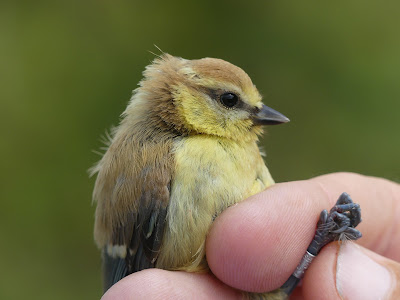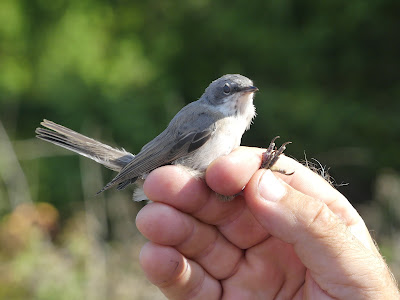We caught 31 birds before closing at 11am due to a freshening wind. We tried a net in a new position where we often see birds moving into the reeds around the scrape. It turned out to be a good choice as one of the Sedge Warblers was carrying a ring from the French Museum de Paris scheme. This bird was almost certainly bred in the UK, possibly at Sculthorpe Moor, and would have been captured and ringed on the migration south through France.
Sedge Warbler ringed under French ringing scheme
Museum de Paris ring
We will await details of where this bird was trapped and ringed. Every summer there is a massive ringing effort in France, trapping birds using the reedbeds as many sites are supporting efforts for the Acrola project, recording migrating Aquatic Warblers.
There were only three retraps with a lot of recently fledged birds turning up in the nets.
Juvenile Grasshopper Warbler
Of the 11 species represented there were juveniles of Sedge Warbler, Reed Warbler, Chiffchaff, Grasshopper Warbler, Great Tit, Wren, Dunnock and Jay.
Totals: 28 (3)
Blackbird - 1
Blackcap - 1
Chiffchaff - 8
Dunnock - 1
Grasshopper Warbler - 1
Great Tit - 1
Jay - 1
Reed Warbler - 5
Sedge Warbler - 6 (2 including a French control)
Whitethroat - 1
Wren - 2 (1)






























